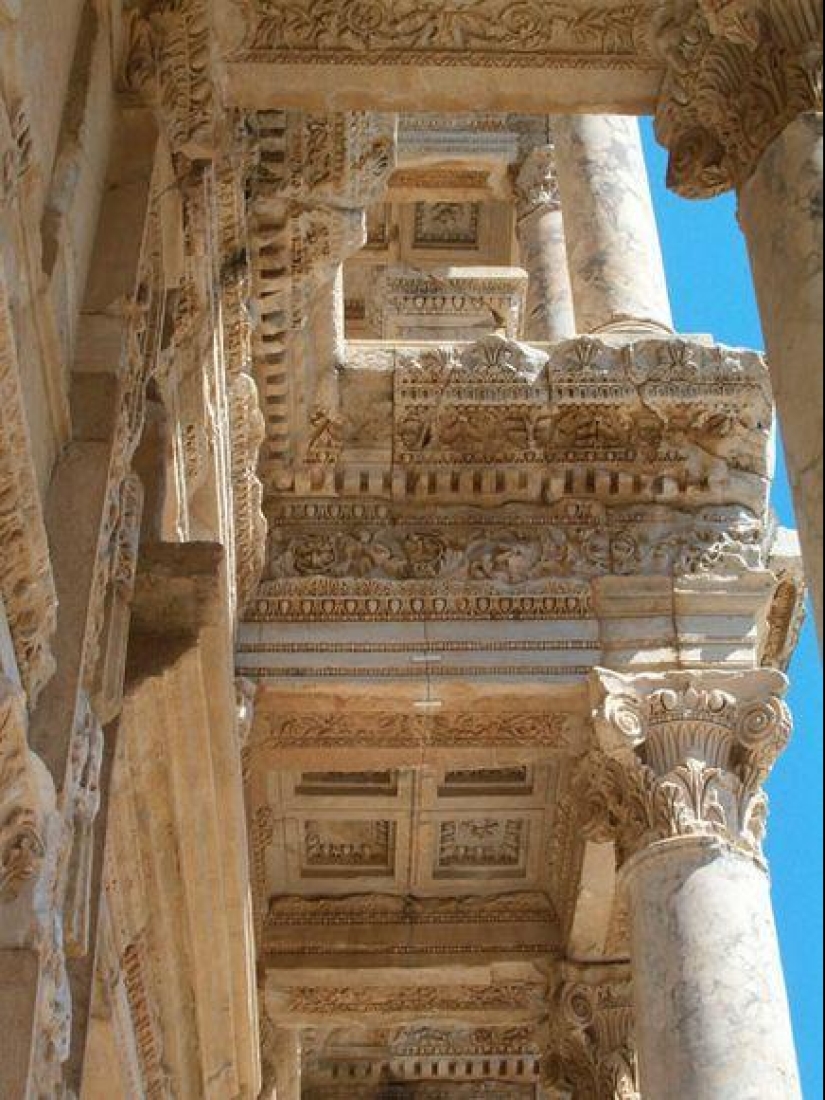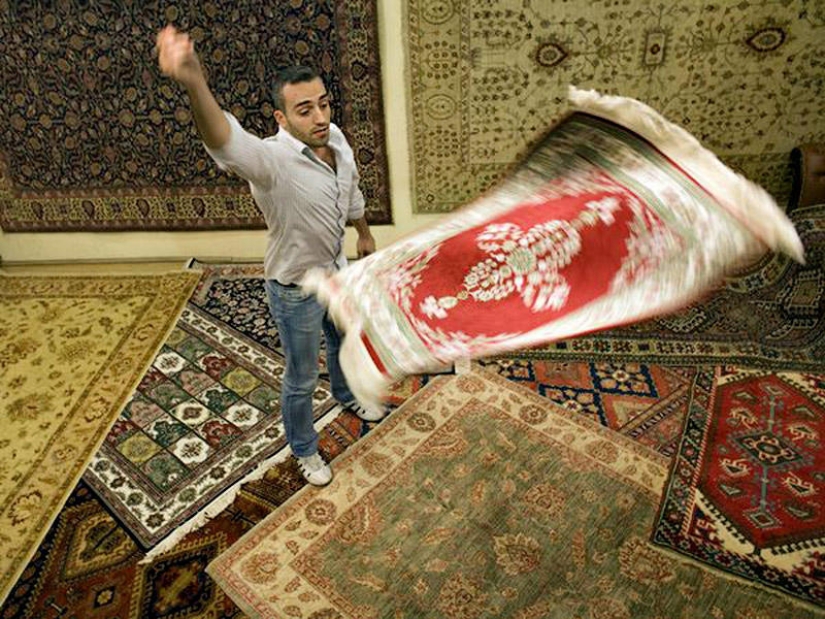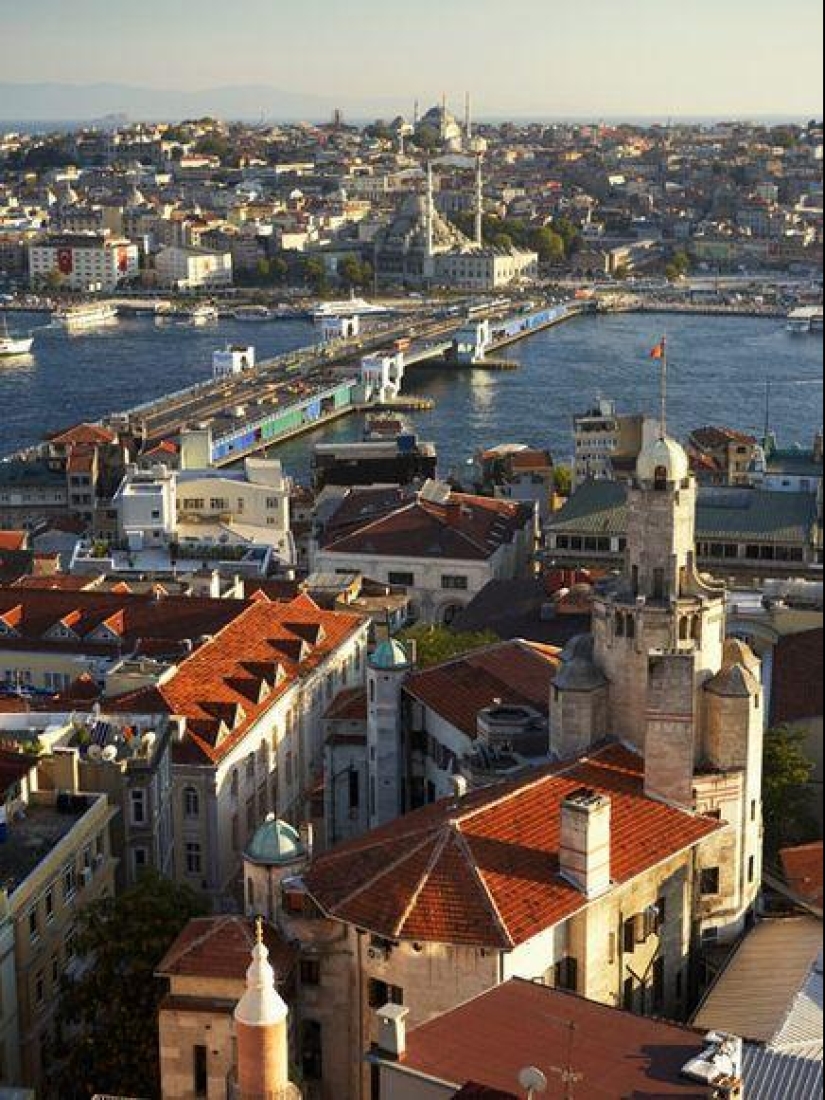13 Top Tourist Attractions in Turkey
Categories: Asia
By Pictolic https://pictolic.com/article/13-top-tourist-attractions-in-turkey.htmlOn October 29, Turkey celebrates Republic Day - today, numerous parades, school processions and nationwide festivities will be held throughout the country. On this important day for the whole of Turkey, we invite you to enjoy the photos of this wonderful country, which every year pleases thousands of Russians.
Turkey is a country of contrasts and divine beauty, one of the most popular resorts and a center of historical heritage. Here, majestic mosques stand side by side with modern buildings, and the pristine atmosphere of antiquity reigns in the narrow streets of old cities.
(Total 13 photos)


1. Dervishes
This ritual dance of the Sufi sect, a mysterious branch of Islam, first appeared in Konya 700 years ago thanks to the Persian poet Rumi. The first European travelers called Sufi dancers "dervishes". They believe that the repetitive spinning movement of the dance allows them to forget their earthly body and draw closer to the Lord. "Dervish" is a modified word for darwish, which means Sufi in Arabic. (Eda Kaya)

2. Blue Mosque, Istanbul
The Sultanahmet Mosque in Istanbul's old city is better known as the Blue Mosque, given the thousands of blue tiles that cover the inside of the mosque. The famous structure with cascading domes and six minarets began to be built in 1609 by the 19-year-old Ottoman Sultan Ahmet I. He died just a year after the completion of construction in 1616. (Wilfried Krecichwost/Getty Images)

3. Fashion show, Ankara
The religious Islamic headdress, the hijab, has become a bone of contention in modern Turkish society. Since the end of the First World War, the post-Ottoman government of Atatürk fought fiercely for the separation of religion from the state and, among other things, banned the wearing of hijabs in public institutions. But recently there has been a tendency in the country to adhere to the Islamic past, which has led to fierce ideological conflicts over clothing. In the photo: a model at a fashion show in Ankara shows off an outfit from Setrms, a fashion brand that specializes in Islamic clothing. (Yoray Liberman/Getty Images)

4. Topkapi, Istanbul
Located somewhere between the Bosphorus and the Sea of Marmara, Topkapi Palace was the seat of the Ottoman government for more than 400 years. The construction was erected in the middle of the 15th century, but then it was completed and updated throughout the following centuries. After all, today the total area of the palace occupies 69 hectares. Its décor, including the magnificent mosaics in this photo, emphasize the greatness of the Ottoman Empire and embody the eras of the reign of each of the sultans. (Murat Taner/Getty Images)

5. Ruined Church, Ani
Ani was nicknamed the "City of 1001 Churches". Once it was a majestic city that could be compared with Byzantium. It is located on the troubled border between Turkey and Armenia. Ani survived over the centuries, survived many wars and earthquakes, but, unfortunately, as a city it has not been preserved. Now it is just scattered ruins of churches and mosques. (Associated Press)

6. Library in Ephesus
Most of the ruins of the great city of Ephesus date back to the era when the city was the capital of the Roman province. But also silent stone witnesses of those times when more than 4000 years ago the city was ruled by the Greeks and Persians are still preserved here. Ephesus is located next to the Little Menderes River in western Turkey. The main buildings of the ancient city are the Temple of Artemis and the Library of Celsus (pictured). (Didier De Pauw)

7. Hagia Sophia, Istanbul
The Byzantine emperor Justinian built this majestic cathedral in the middle of the 6th century AD in just six years. Hagia Sophia remained the largest Christian temple for almost a millennium. After the city fell under the pressure of the Ottoman Turks in 1453, the temple was turned into a mosque and four slender minarets were added to it. In 1935, this ancient temple became a museum. (Murad Sezer/Associated Press)

8. Turkish carpets
Haggling for carpets is an age-old tradition at the legendary Grand Bazaar in Istanbul. Carpet weaving originated in Central Asia over 2,000 years ago, and the Turkish tribes were among the first to practice this painstaking craft. For centuries, manufacturers have been weaving the best carpets of their kind for the Ottoman rulers, and this has helped them hone their craft. Turkey still produces some of the finest carpets in the world. (Palani Mohan)

9. Grand Bazaar, Istanbul
Life at the Grand Bazaar has been in full swing for over 500 years. It was built in the 1460s. Mehmed II the Conqueror, and in those days this bazaar served as the "last stop" on the Silk Road. Today, this legendary place is a real labyrinth of stone and marble streets and market stalls. Despite the increasing popularity of shopping centers, the Grand Bazaar is still one of the largest and best covered markets in the world. Today it occupies 31 hectares and accommodates more than 3,000 stores. (Gavin Hellier/Getty Images)

10. Cave houses in Cappadocia
What is now Cappadocia in central Turkey was once buried under a deep layer of volcanic ash. Over millions of years, wind and water have been able to “carve out” a whole forest of mushroom-like spiers from soft stone. For more than a thousand years, people have turned them into their homes, churches, and even underground labyrinths where they could hide from enemies. (Apurva Madia)

11. Cappadocia
Until recently, the famous cave houses in Cappadocia were empty, and the region attracted only adventurers. But improved infrastructure and the creation of luxurious living conditions, including new and renovated cave houses, have turned the region into a real tourist attraction. Among other entertainments, here you can fly in hot air balloons and enjoy plenty of amazing views of volcanic spiers and fruit groves. (Marge Botten)

12. Oludeniz Beach
Oludeniz Beach on the Mediterranean Sea is known for its wide coastline, blue waters and soft waves. The name of the beach is translated as "calm sea". Constant breezes and steep cliffs attract paragliders. (Gjoko Pargo)

13. Galata Bridge
The first bridge across the Golden Horn Bay was a temporary structure erected by the Ottoman army in 1453. And only in the late 1830s. a permanent bridge was built here. The current bridge connects the Galata area with the old city of Istanbul and is the fifth building on this site. This version of the bridge was built in 1992, and it houses shops, restaurants and coffee shops under the roadway. (Wilfried Krecichwost/Getty Images)
Keywords: Attractions | Türkiye
Post News ArticleRecent articles

See what uninhibited ladies looked like at the height of the American baby boom. In those days, there was no trace of silicone, and ...

We offer you a selection of interesting facts from a variety of fields of knowledge. How does our body react to sneezing? Where did ...
Related articles

Istanbul is different from other cities with its rich history and a variety of tourist attractions. Continents, cultures, ...

In the world there are things or places that have seen all, for example, the world's attractions. Someone looked at them in life, ...

Anyone who has visited in the world famous tourist spots in recent years, knows how difficult it is to achieve the perfect shot. It ...

Imagine a forest where hundreds of pine trees seem to bow to an invisible force and remain frozen in this strange obeisance ...